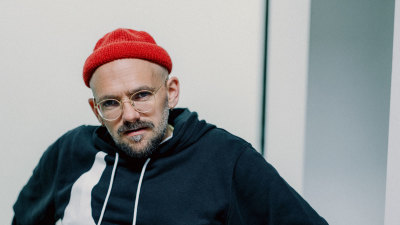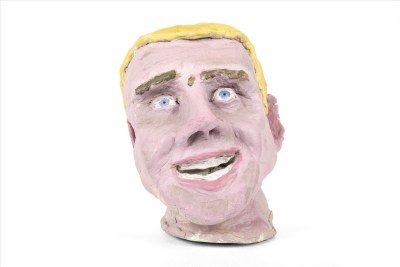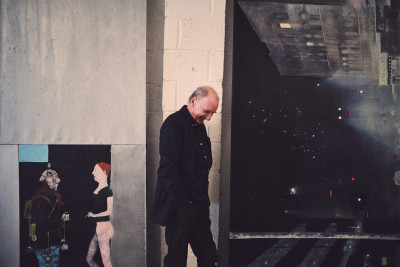Antony Gormley: “We need art more than ever”
Antony Gormley: “We need art more than ever”
As I see it
By Louise Cohen
Published 19 October 2016
In our new series, artists reflect on art, life and lessons learnt. Here, Antony Gormley RA explains how he first found his subject, why the arts are vital in education and why he’s ashamed of Brexit.
-
Perhaps best known for his 200-tonne Angel of the North installation near Gateshead, London-born Sir Antony Gormley RA is one of the UK’s most celebrated sculptors. After studying at Central St. Martins, Goldsmiths and the Slade, he won the Turner Prize in 1994, was elected a Royal Academician in 2003 and was knighted in 2014. His recent show, Fit, was at White Cube Bermondsey, and his installation, Object, is in the front hall of the National Portrait Gallery until May 2017.
Art is one of the most brilliant tools
for making sense of the world and our place in it. People think that there is a progression in art from the primitive to the contemporary, but I don’t believe in artistic progress any more than human progress. Art is the way human life expresses itself and it’s always been that way. It’s still trying to do the same job that the artists of the Lascaux caves were.
I found the body right at the beginning.
One of the first things I made was with a friend, before I went to art school. I just dipped an old hospital sheet in plaster and covered her in it. It was just this fragile shell of a full, sleeping person. I went through five years of art school doing all sorts of things, and then came back to the realisation that actually that was what I wanted to do: identify a human space in space.
Goldsmiths caused me pain, trouble and great inspiration.
I realised when I got to art school that I didn’t have a clue what I was doing. Irrespective of whether art can be taught, art school is where you learn from everyone around you. I’d say it’s essential for an artist.
It’s not about making pictures.
Figurative sculpture in the West has mostly been about representation, capturing a moment or some action in a narrative. I always knew I wasn’t interested in that. The body is more a place than an object for me. I want to encourage first-hand experience – to invite you to look at this structure and examine your own experience of it, and of your body in relation to it and the space it is in. You could say there is no subject in any of it until the viewer arrives and begins to reflect on their own experience.
-
-

I carry notebooks in my pockets.
Drawing is very important for me – I’m always noting down little ideas, finding ways of using a line to articulate the core of a body. Could it be a curve like this, or an “S” like that?
Naming a work is often harder than making it.
It’s the last step – trying to find a name that will open the sculpture up to the world but also not close it down. If it tells you what it is, it’s all over. It’s got to be an invitation to think about the work some more. I make lists and lists and lists, trying to find the name for a recently made work.
-
-
Sculptures start with a body scan.
If it’s a “body” work I get someone to scan me. I used to be moulded but about two years ago we got a body scanner installed at the studio, developed with the Engineering faculty at Cambridge University. It’s absolutely brilliant. Since then we’ve changed the studio’s plaster room into an office.
I used to go to bed exhausted from beating lead and mixing plaster.
Now that extreme physical exertion of making sculpture is shared with my assistants, perhaps that allows me to see the work more ruthlessly. When you’ve invested an enormous amount of physical and emotional energy in a piece of work, it can be difficult to judge it objectively. I think I’m in a better position to do it now, and it’s a huge pleasure and privilege to be surrounded by such ambitious, sensitive, intelligent people.
Moving the game on is necessary.
I don’t want to bore people. The opportunity for a show is to present different propositions. Let’s look at the potential of sculpture this way. The leitmotif of the new White Cube show is about interrogating both the built environment and our experience of it, substituting the syntax of architecture – that I think of as the second body for anatomy (see Sleeping Field, below).
I’m as addicted to my phone as anyone.
There are very practical gifts that technology gives us. I use its ability as an external brain and its capacity for visual note-taking. And we have a “fam” Whatsapp group; I have a son studying in Germany and another moving about a lot, and it’s terrific to be able to keep up with them so instantly. Just the odd picture that tells you “I’m alive” – it’s what the postcard used to do, really. But at the same time, I am very aware of just how addictive it is, and the danger of the selfie emerging as a kind of surrogate for experience.
Draw how it feels to sit by the sea or stroke your dog.
Making is a form of thinking. It’s so important from an early age to encourage young people to make art and to look at art, and the fact that we would privilege numeracy and literacy over visual awareness is a sad indication of an increasingly corporate value system. We must give young, curious, inquiring minds the ability to have the confidence in their own perception. Treat your own response with more value than something you read in a book.
-

Antony Gormley RA, GRIP, 2014.

Antony Gormley RA, Object, 1999.

Antony Gormley RA, HOLD, 2016.

Antony Gormley RA, Sleeping Field, 2016.
-
I’m ashamed about Brexit.
I didn’t recognise how serious the divisions in our society were. I’m ashamed that the sacrifices my parents and grandparents made to achieve peace and community in Europe have been dashed by this return to a primitive form of nationalism and a fake, toxic notion of nostalgia. My mother is German and my father is half Irish. In terms of our gene pool we have always been European, and in a globalised world we need the widest possible reinterpretation of our tribal loyalties.
I’m very, very suspicious
of the motives of those who are supposedly in charge of this nation. Personal ambition and opportunism seem to have played far too large a part in the mess that we are presently in.
Cultural exchange is a primary avenue of peace
and understanding between people, and of course art has an absolutely intrinsic role to play in this. When you look at non-urban, non-literate societies, art is the thing that holds a community together. It’s the thing in which the hope and the fears of a collective community of interests are expressed. As we withdraw into the grid of the dense, high-rise city, we need art more than ever.
Keep looking at your own work.
Keep looking at the world, trying to reconcile the two things. Cherish your fellow travellers. Don’t give up. If people can sense the intensity of your will to do things that matter they will help you. That’s my best advice.
-
Inside Antony Gormley's studio

Antony Gormley in his North London studio

Some of Gormley's current notebooks

A collection of "body" works in Gormley's studio

Sketches on the wall of Gormley's studio

Antony Gormley's sketches

Work in Gormley's studio

Detail of a steel structure by Antony Gormley

Antony Gormley with body works
-
Object is in the front hall of the National Portrait Gallery until May 2017.
















